#mimulus ringens
Text


More from the gravel bars and mudflats, a type of riparian ecosystem of the Little Miami pt 2
Mimulus ringens, previous post had the other common species in this, these pictures show just how much larger the peduncle is comparative.
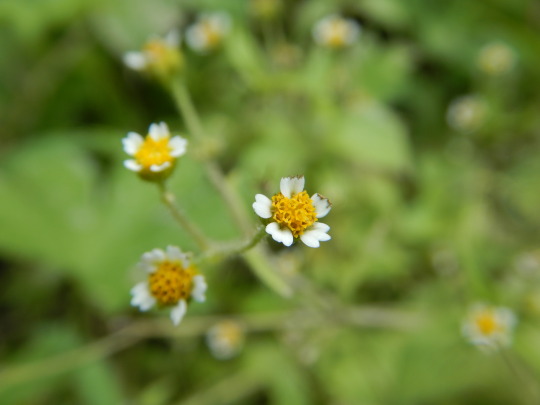

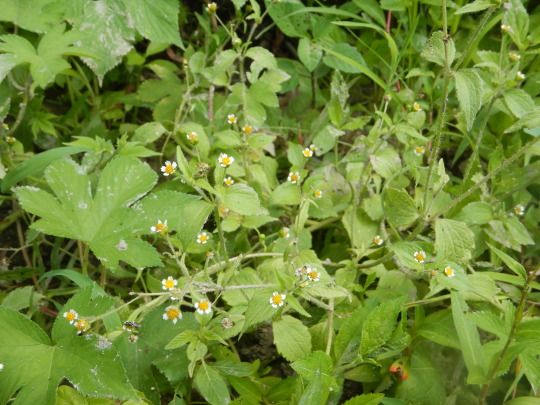
In a patch of Korean hops lies an introduced naturalized species known as Galinsoga quadriradiata or the shaggy soldier. (on broken bar)

Phyla lanceolata, lance leaf fog fruit , If your from Ohio we call it Frog Fruit; a native species perfect for bioswale planting and riparian restoration. Great stabilizer.
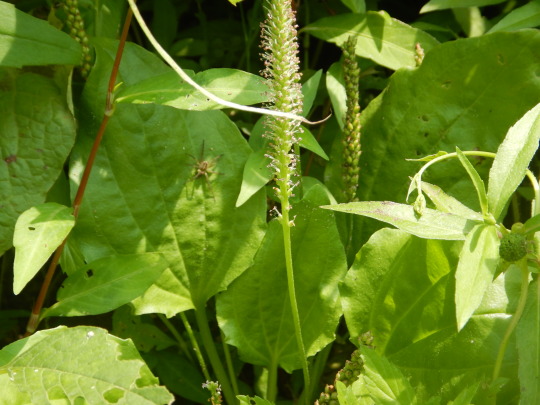

^bottom pic from MN wildflower blog. via Peter M. Dziuk
in the mudflat, Plantago rugelii (fairly sure based off of red base) or the floppy red based broad leaf plantain. If you find a plantain in a mudflat, it usually is stick like or narrow leaved with really unique flower structure that is more bristly looking on average, these tend to be our natives, Heartleaf is more of a gravel scour and flat wet wood species. Much like heart leaf, rugel's also has a broadleaf compared to the rest of the wet loving species. The base of this plant were barely red and the flower morphology was very bristle like is why I think the ID is correct, plus the niche affiliation; with this said, the P. major is also a generalist and can have red when stressed by summer heat on it's petioles so it would of been better to go off of the bulb like base instead of the intuition while kabrewing on the Little Miami. The other way to tell is that the ovules stick more erect.



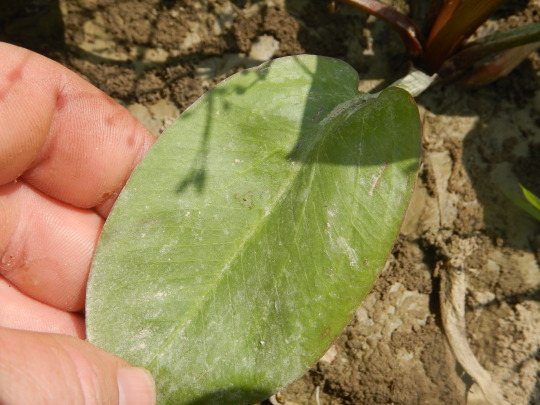


Alisma spp. or rather I think it's A. triviale is a common mudflat species that can take longer partial submersion but doesn't like extended turbulence. Heart leaved small flowered northern water plantain.
#ohio#botany#wildflowers#mimulus ringens#mimulus#galinsoga#galinsoga quadriradiata#phyla lanceolata#phyla#alisma#alisma triviale#plantago rugelii
82 notes
·
View notes
Photo



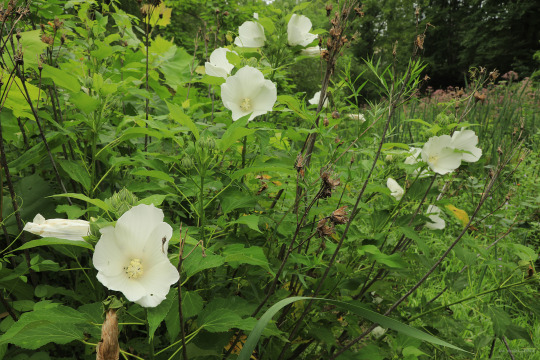





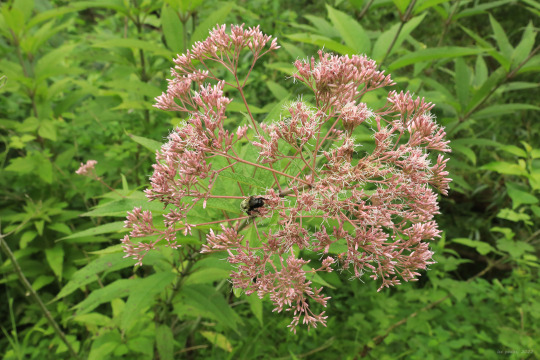
I stopped by the reservoir at White Park yesterday to photograph the rose mallow (Hibiscus moscheutos), sometimes referred to as swamp rose-mallow, which is now at peak bloom. This is a healthy and vigorous wetlands community visited by great blue and little green herons, kingfishers, a variety of ducks, and the occasional osprey - all the more remarkable because it’s within walking distance of downtown Morgantown. Anyway, the rose mallow was fabulously beautiful in its various shades of crimson red, pink, and white, and the hollow Joe Pye weed (Eutrochium fistulosum) was equally impressive, presiding over its wetlands kingdom with the massive lavender crowns of true kings.
From top: rose mallow, whose flowers display high variability in color and petal sizes/orientations (although some specimens may be hybrid escapees, this plant nonetheless possesses some wild genetic impulses); wild mint (Mentha arvensis), a cosmopolitan mint with a strong flavor and an affinity for wetlands; Allegheny monkeyflower (Mimulus ringens), a whimsical perennial that forms dense stands in swamps and along streambanks; seedbox (Ludwigia alternifolia), so named because of the four-sided shape of its seed capsules; and without further adieu, a true king bowed under the weight of its elegant crown.
#appalachia#vandalia#west virginia#summer#flora#wildflowers#wetlands#white park#morgantown#hibiscus moscheutos#rose mallow#swamp rose-mallow#mentha arvensis#wild mint#mimulus ringens#allegheny monkeyflower#ludwigia alternifolia#seedbox#rattlebox#eutrochium fistulosum#hollow joe pye weed
80 notes
·
View notes
Text
youtube
Watch the 2024 American Climate Leadership Awards for High School Students now: https://youtu.be/5C-bb9PoRLc
The recording is now available on ecoAmerica's YouTube channel for viewers to be inspired by student climate leaders! Join Aishah-Nyeta Brown & Jerome Foster II and be inspired by student climate leaders as we recognize the High School Student finalists. Watch now to find out which student received the $25,000 grand prize and top recognition!
#ACLA24#ACLA24HighSchoolStudents#youtube#youtube video#climate leaders#climate solutions#climate action#climate and environment#climate#climate change#climate and health#climate blog#climate justice#climate news#weather and climate#environmental news#environment#environmental awareness#environment and health#environmental#environmental issues#environmental education#environmental justice#environmental protection#environmental health#high school students#high school#youth#youth of america#school
12K notes
·
View notes
Text
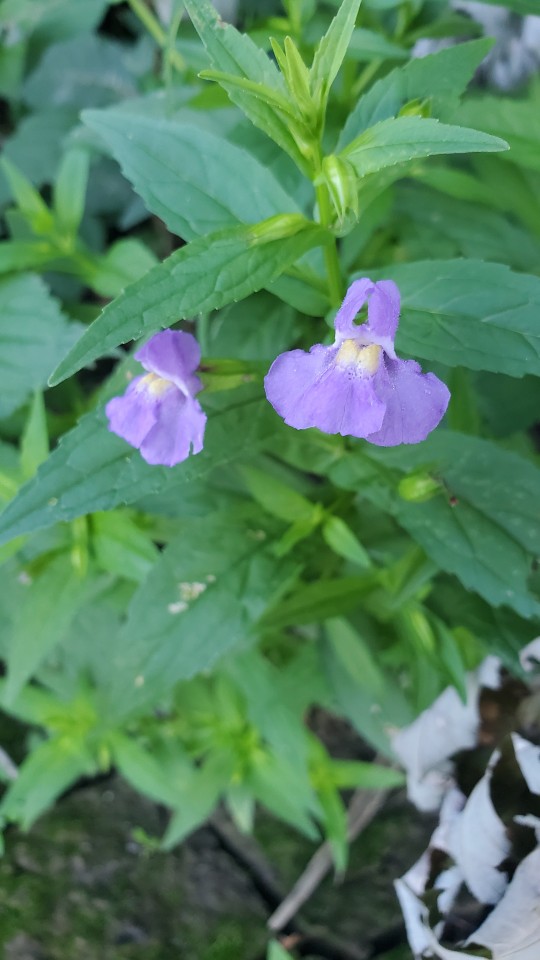
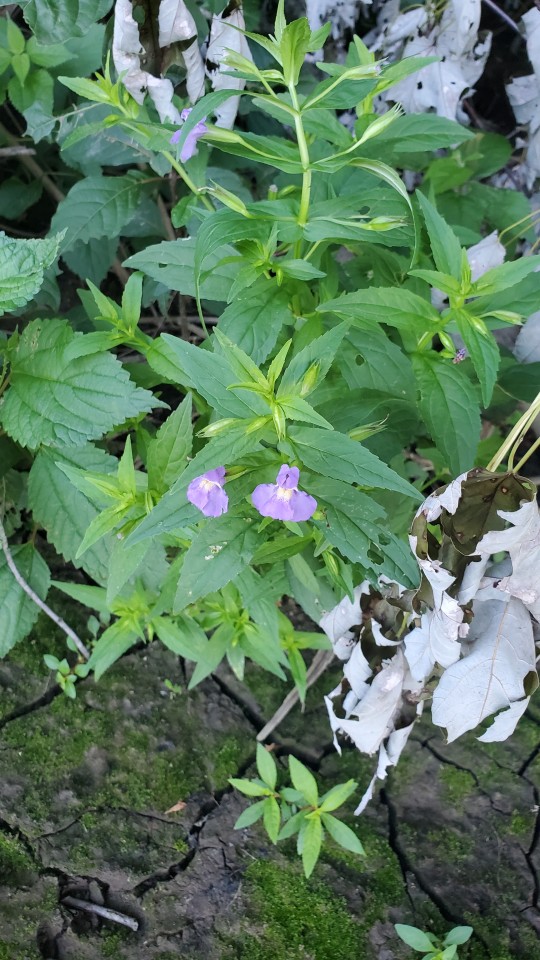
7/30/22
0 notes
Text
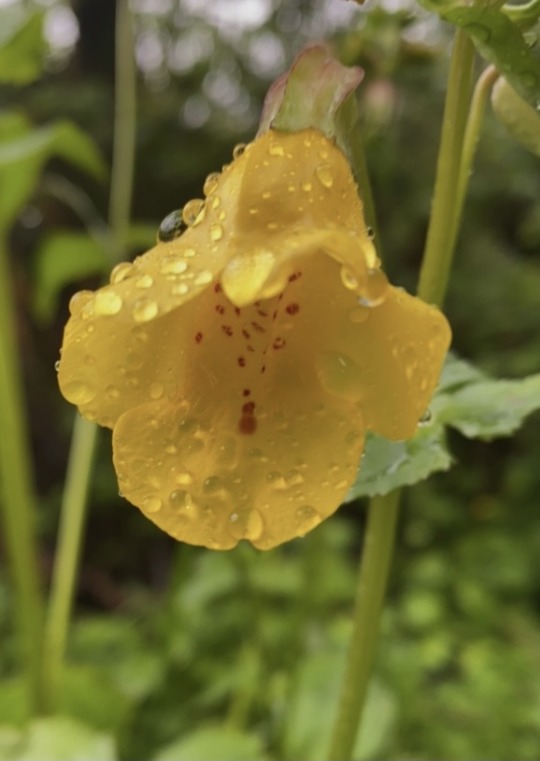
Rainy day monkey flower..mimulus ringens..
125 notes
·
View notes
Photo

Monkey flower, Mimulus ringens. Usually they’re bluer.
Most places where I found this, even two years ago, have been cultivated and/or cleared with chemicals, so I was pleased to find a couple of these by the lake.
90 notes
·
View notes
Photo




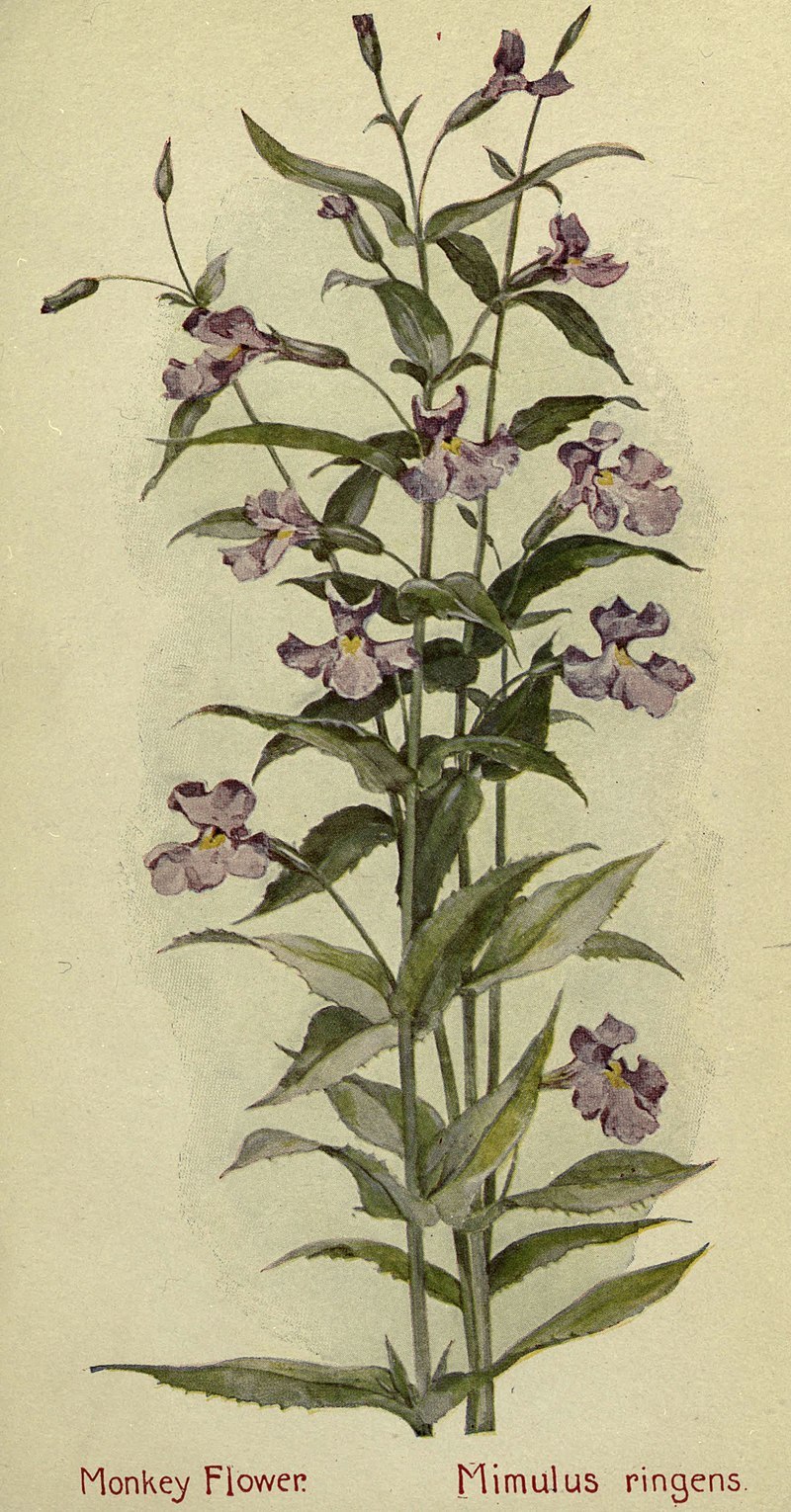





1) Marsh Marigold (Caltha palustris)
2) Sabbatia (Sabattia chloroides)
3) Fringed Polygala (Polygala paucifolia)
4) Oswego Tea (Monarda didyma)
5) Monkey Flower (Mimulus ringens)
6) Early Golden-rod (Solidago juncea)
7) Arrowhead (Sagittaria latifolia)
8) New England Aster (Aster Navae Angliae)
9) Cone-flower (Rudbeckia hirta)
10) Evening Lychnis (Lychnis alba)
Some more botanical illustrations taken from ‘Field book of American Wild Flowers’ by F. Schuyler Mathews.
Published 1912.
This file comes from the Biodiversity Heritage Library.
Wikimedia.
282 notes
·
View notes
Text
youtube
Watch the American Climate Leadership Awards 2024 now: https://youtu.be/bWiW4Rp8vF0?feature=shared
The American Climate Leadership Awards 2024 broadcast recording is now available on ecoAmerica's YouTube channel for viewers to be inspired by active climate leaders. Watch to find out which finalist received the $50,000 grand prize! Hosted by Vanessa Hauc and featuring Bill McKibben and Katharine Hayhoe!
#ACLA24#ACLA24Leaders#youtube#youtube video#climate leaders#climate solutions#climate action#climate and environment#climate#climate change#climate and health#climate blog#climate justice#climate news#weather and climate#environmental news#environment#environmental awareness#environment and health#environmental#environmental issues#environmental justice#environment protection#environmental health#Youtube
12K notes
·
View notes
Text
the audubon society plants list finally loaded kids let’s do a brief (haha) cold medicine induced analysis of what the heck they’re recommending for my local area (western PA) and whether it could grow in my shitty yard (if i’m unfamiliar with it i’m skipping it just to be fair)
It’s alphabetical by common name I guess so ok i’m doing this under a cut I supppose
Allegheny Monkey Flower (Mimulus ringens) - this plant is indeed one you see kinda often...... on the very edge of the Allegheny river literally growing as a marginal plant. not ideal unless you got a pond or live in a swamp
Allegheny Serviceberry (Amelanchier laevis) - this is one you see growing in the woods near swamps so nope, not in this drought hellscape of a yard
Alternate-Leaf Dogwood (Cornus alternifolia) - another understory moisture loving tree/shrub... next
American Beech (Fagus grandifolia) - again, moisture loving woodland tree. European Beeches are overall more drought tolerant so if you see a beech in the city or suburbs, it’s probably not an American Beech. also, in my area, you can’t find an American Beech that isn’t suffering from Beech bark disease unfortunately
American Black Elderberry (Sambucus nigra ssp. canadensis) - These are good plants and grow all along the shady woodsides here. Same issue though, they like moisture and at least partial shade. And the ornamental varieties you can find at garden centers tend to be European hybrids with fancy leaves
American Pokeweed (Phytolacca americana) - shadey woodland lad again. They’re also very very weedy idk that anyone would want this in their garden.
American Witch-Hazel (Hamamelis virginiana) - a good plant. still needs moist soil but I think would probably be ok. It looks really cool planted near grasses because it blooms in fallish
Big Bluestem (Andropogon gerardi) - finally a prairie plant!! it’s my boy big bluestem. unfortunately, it can look kinda wild and weedy for a suburban garden unless you do it right.
Black Chokeberry (Aronia melanocarpa) - handsome, good, nice berries, good fall foliage, excellent choice, prefers full sun but still likes it a bit moist and will drop all its bottom leaves and turn fall colors early if you underwater it oops i definitely never was responsible for that at work with b&b aronias.
Black Raspberry (Rubus occidentalis) - oh word we got these in our garden and the birds actually like the red ones better rip
Black-Eyed-Susan (Rudbeckia hirta) - that’s right babey it’s Susan. this baby will reseed all day in sun or shade and birds love that shit. downfall is the species plant is prone to rust and cultivars do a bit better.
Butterfly Milkweed (Asclepias tuberosa) - Good and Wholesome friend. I don’t recommend this as baby’s first milkweed though because they can be slow to establish and kinda disappointing and small and if you get caterpillars on it the first year, it may not survive.
Cardinal-Flower (Lobelia cardinalis) - my mom actually has managed to keep a Lobelia alive in the shadiest, wettest part of her garden but listen...... this is a marginal or swamp plant. Put it in the swamp.
Common Buttonbush (Cephalanthus occidentalis) - it’s the bae
Common Milkweed (Asclepias syriaca) - do not try to buy this as an established plant at a garden center, they will look at you funny and point at the roadsides. Either wait until fall seedpod time and go harvest some or buy some seeds online
Common Snowberry (Symphoricarpos albus) - I had no idea this was native actually but it’s cool because it gets big white ORBS
Common Winterberry (Ilex verticillata) - it’s got stems. it’s got berries. it can grow wherever. what more could you want??? english holly who?????
Common Yarrow (Achillea millefolium) - actually often confusingly hybridized with European Yarrows so no one knows whether they’re ~true~ natives or not. Who cares they will survive anything except a swamp. They will live in a drought ass no topsoil suburban neighborhood like a CHAMP. they were made for this.
Dense Gayfeather (Liatris spicata) - just including this one because it sounds like a Good Omens joke
Flowering Dogwood (Cornus florida) - put that baby tree back in the moist woodlands where it came from or so help me
Gray-Head Mexican-Hat (Ratibida pinnata) - ayyy prairie plant, though this isn’t the species you commonly see for sale at garden centers and this one is decidedly less phallic than R. columnifera so that’s a bummer.
Great Blue Lobelia (Lobelia siphilitica) - we half killed this at work because it doesn’t love pot culture or me but someone still bought it all. don’t put this in your dry ass suburban neighborhood or she will hate you too
Northern Bayberry (Morella pensylvanica) - i call this myrica pensylvanica but whatever. birds love it. so do japanese beetles unfortunately
Pennsylvania Sedge (Carex pensylvanica) - it’s a sedge
Red Columbine (Aquilegia canadensis) - unlike other columbine, this bitch likes full sun and probably will grow and reseed anywhere
Redbud (Cercis canadensis) - another understory-ish moisture loving tree but a lot of the cultivars do just fine in the middle of sad suburban yards. also good. blooms wherever it wants while nakey.
Scarlet Beebalm (Monarda didyma) - you will only ever find cultivars of this but who knows, they may slightly more mildew resistant for at least a little while
Shag-Bark Hickory (Carya ovata) - big, handsome, looks like it’s seconds away from falling apart at all times. just how i like my men.
Smooth Oxeye (Heliopsis helianthoides) - please let the one in my mom’s yard know that it’s meant to survive dry soils in full sun
Spotted Beebalm (Monarda punctata) - my favorite bee balm but doesn’t have the Wow factor of M. didyma cultivars. It likes the sun and dry though
Spotted Touch-Me-Not (Impatiens capensis) - wholesome friend! But no one in their right mind would plant this on purpose in their garden also it would be wilt-city out here in the drought ass topsoil-less surburbs. these babies used to grow between the greenhouses and I used to water them like some kinda of bleeding heart
Swamp Milkweed (Asclepias incarnata) - she can actually live pretty well in the middle of drought ass suburban yard and spreads easily by seed but expect half the lower leaves to yellow and drop off by midsummer. poor darling. put her back in the swamp. This is the most reliable commerically available milkweed you will find because it takes to pot culture way better than other milkweeds (rip all the butterfly weed horticulture land kills yearly)
Sweet-Bay (Magnolia virginiana) - more like sweet bae am I right???? actually she wouldn’t live in my yard. needs some afternoon shade and moist, rich soil.
Sweet-Scented Joe-Pye-Weed (Eutrochium purpureum) - It’s Joe!!!!! Will grow all over. Will get 7 feet tall with massive flowers just because he can. Will grow in a swamp, will grow on a hillside, will grow beside Wal-Mart. Joe don’t care. I still call it Eupatorium because I resist change and actually I’m not 100% sure if this or E. fistulosum that is most common around here.
Tall Tickseed (Coreopsis tripteris) - coreopsis is a really popular genus to see on native plant lists but there aren’t many native to my area of Pennsylvania and you won’t find anything but C. verticillata or C. lanceolata cultivars in garden centers. BUt apparently this bitch can get NINE FEET TALL i’m swooning
Trumpet-Creeper (Campsis radicans) - ok, i’d avoid planting this baby unless you know exactly what you’re doing. she may be native but she can and will do her best to eat your home and foundation and your garden in general. she will do her rhizomey best to runner away from you into the wilderness. fun to grow across a pergola though but she will EAT your TREES and your HOME
Virginia-Creeper (Parthenocissus quinquefolia) - ????? no one is going to deliberately plant this, Audubon Society
Wand Panic Grass (Panicum virgatum) - this is why I think making these lists with common name first is so hilarious because what????? I know this as “Switchgrass” which sounds nice and normal wtf is a Wand Panic Grass. that’s what i’m going to call bad bottom dysphoria episodes from now on
White Turtlehead (Chelone glabra) - likes it wet and shaded so wouldn’t do nice in my yard. also why even BOTHER planting this plant unless you’re going to do the cultivar ‘Hot Lips’ (jk probably the white one is more native insects friendly)
Wild Hydrangea (Hydrangea arborescens) - she’s cute and all but if you want a Hydrangea just go full cliche H. paniculata cultivar or nothing. This plant would hate my whole entire yard and then die
anyway, that’s all the plants on the list I felt like rambling about on this fine Tuesday morning. Overall, idk how helpful a list like this would be for first time gardeners, because they would run into the issue of not being able to actually their hands on most of these plants.
Very few on the list would actually be suitable for growing in a new suburban neighborhood or an urban garden. This is an area naturally full of sensitive, woodland, rich, moist soil-loving plants... and unfortunately, those areas are disappearing more and more under new developments and the native pollinators and wildlife are going along with them.
#i really just did that and rambled about a whole lot of plants for no good reason#long post#idk what to tag this as
19 notes
·
View notes
Text
After browsing/scouring through that inaturalist app I discovered that in fact, there are sightings/documentations of several plant species for my locality (just not groundnut vine of course) on the app. What’s interesting is the fact most of the species are ones I would not the least bit expect to exist anywhere in my county, said surprising species include;
Lindera benzoin (Northern Spicebush)
Ptelea trifoliata (Common Hoptree)
Drosera intermedia (Spoonleaf Sundew)
Cyperipedium parviflorum (Yellow Lady’s Slipper Orchid)
Triadenum fraseri (Bog St. John’s Wort)
Gentiana linearis (Narrowleaf Gentain)
Phytolaccca americana (Pokeweed)
Carya ovata (Shagbark Hickory)
Geum triflorum (Prairie Smoke)
Clematis virginiana (Virgin’s Bower)
Melampyrum lineare (Narrowleaf Cow wheat)
Mimulus ringens (Allengeny Monkeyflower)
Goodyera pubescens (Downy Rattlesnake Plantain orchid)
Arisaema dracontium (Green Dragon)
Claytonia virginica (Virginia Spring Beauty)
Andromeda polifolia (Bog Rosemary)
Euonymus obovatus (Running Strawberrybush)
Penstemon hirsutus (Hairy Beardtongue)
Checking the map, it appears that some are not only in this county, but are not far from some of the closestby towns, PLUS potentially Ellice Swamp (you can’t map marker THAT close to Gadshill with wetland species and NOT be referring to Ellice Swamp). It is also interesting to note that some species were NOT on the county’s map sightings (Christmas Fern and Canadian Hemlock being the big two, almost concerning me just a bit).
Most of these species I’ve listed I’d only be able to find in spring or summer, not to mention most of them are absolutely-do-not-collect/touch plants whether due to sensitivity/rarity and/or just because they are on biologically protected land (The sundew and the orchids I can say that with an absolute certainty; do not even touch, even seedpods are off limits).
That being said though, seeing some of these species listed for this county gives me some hope that I may one day find them in some local woodlots (Claytonia and Green Dragon being the ones I’m holding the most hope for; their habitat preferences tend to overlap Trillium and Jack in the Pulpit territories in most ecological data). The do-not-touch species tbh I would just enjoy to just see with my own eyes and I’d be satisfied. Guess we’ll see in the future won’t we?
9 notes
·
View notes
Text
Day 448 New oven & hob
Shapps insists new green list offers `a little bit of relief´ for travel firms
The gas fitter, Kyle, arrived to fit the new oven and hob. All very stressful - will they fit properly, will there be a mess, will he damage the woodwork, etc. As it turned out it all worked out well apart from a couple of snags to be fixed. The hob was only millimeters away from not fitting properly and need the edges sealed to the granite. The oven fits, but need the top of the gap in the woodwork to be enlarged to enable it to fit perfectly. Not big jobs. Kyle will be back next week to fix the hob and to take away the old oven. Just too heavy for me to shift with him.

Having renovated the woodwork and now installed the new cooking units the kitchen looks much better for it’s makeover.
S had been out shopping while the fitter was here. She returned with a surprise for me - a mimulus ringens or Allegheny Monkey-Flower. Really delicate white and purple flowers and a scent like vanilla. So lovely. Second part of the surprise was one of Clandon’s fruit scones - the best that you will ever find.
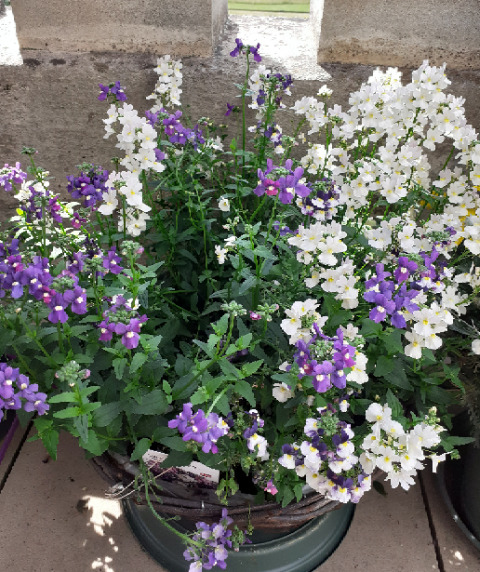
0 notes
Text
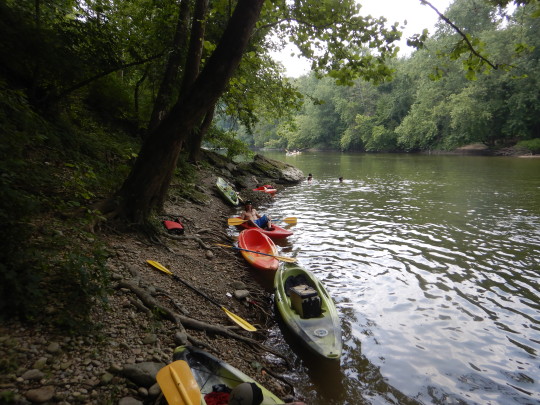

Along the Little Miami Inbetween hamilton and clermont co is a section that maintains conglomerate mudstone layer and a lot of mud banks close enough to mudflats that you still get some classic mudflat species and riparian gravel bar species.

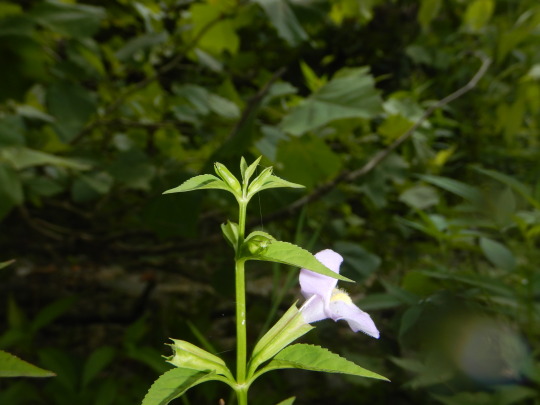
The first is the winged monkey flower(Mimulus alatus) , known for winged squared of stems, though since Ohio gets both, if you need to collect seeds for bioswale forbes and want to differentiate them when the stem is brown, the peduncle, aka main stem that holds/bares a flower or a fruit attached to the stem, is almost sessile or near sessile, aka still there but close to not existing where as Allegheny is elongate.



a gravel bar species requiring full sun is Hibiscus moscheutos or the swamp rose mallow, it's about as common as our other native Hibiscus laevis or the halberd leafed mallow; this species pictured has more common smaller colonies with pink flowers on average with what most assume as a non deeply lobed leaf differing from a halberd lobed white flower with taller plants on average and larger colonies.

Wouldn't be a good gravel bar without falls redest sedum, Ditch stone crop! or is it a sedum really???, while we used to assume based on morphological features it is no longer placed in the genera Sedum and is Penthorum sedoides a non succulent water loving species that actually has found it's self as a member of the saxifrage order. It is one of two species that I know of in the genera, and is associated with it's own family as of now. It is also the only member of the genus within the United States. Side note: As a member or the saxifrage order I don't even know if this species utilizes CAM to be honest and it wouldnt benefit it if you think about it.



Lindernia dubia
false pimpernel
Associated with the mudflats, it's funny because people call this and many others the mudflat ephemerals because they are brief and seasonal inbetween flood stages. These always look like a monkey flower at first glance before you know the species.
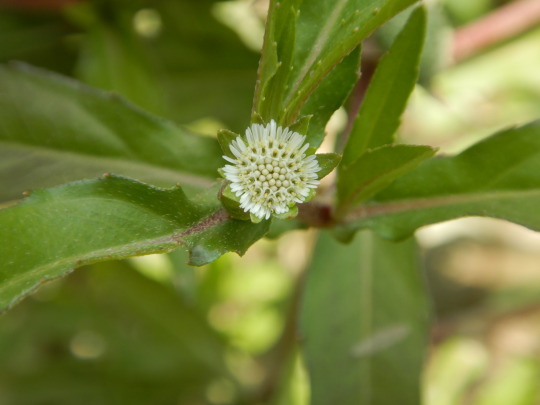
Eclipta prostrata
Mudflat false daisy, a riparian and swale species but also very common on mudflats.
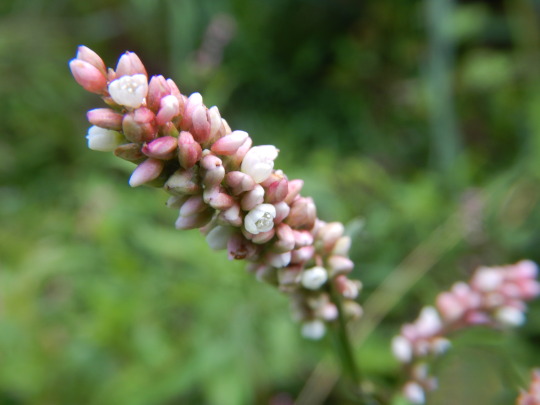
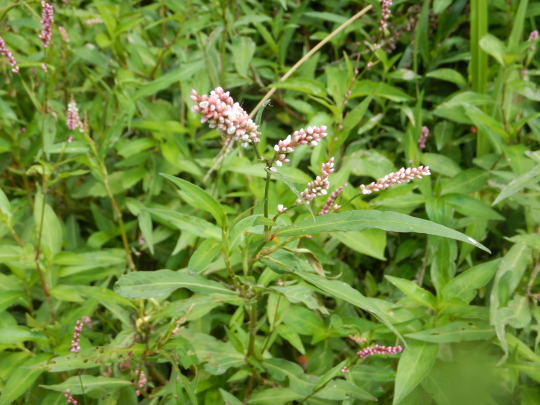


Persicaria pensylvanica or pensylvania smart weed, is a robust flowering species that forms semi erect inflorescence that are peppered pink and white. and easy to differentiate when you look at a non frimbrate connected ocrea that sheathes both stem and petiole. you can see invasive Persicaria longiseta or oriental bristled ladies thumb with frimbrate ocrea in background :( spicy flowers on our natives less spicy on the non natives.
#mimulus#mimulus alatus#ringens#botany#ohio#mudflats#riparian#hibiscus moscheutos#hibiscus laevis#hibiscus#lindernia dubia#lindernia#mudflat#ephemeral#penthorum#penthorum sedoides#eclipta prostrata#Persicaria pensylvanica
22 notes
·
View notes
Photo
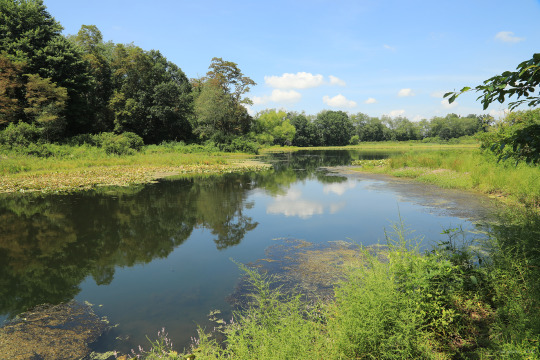
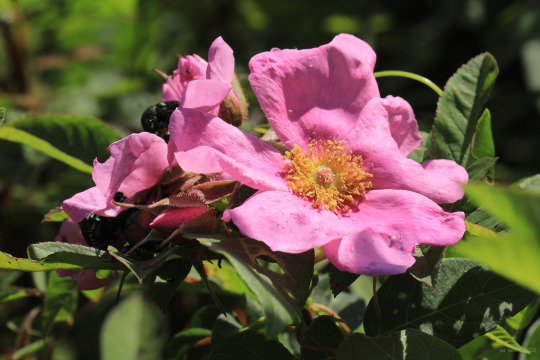
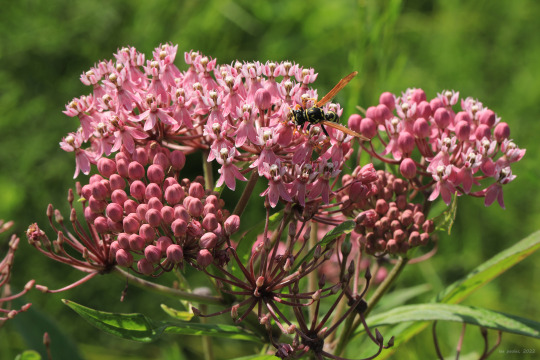

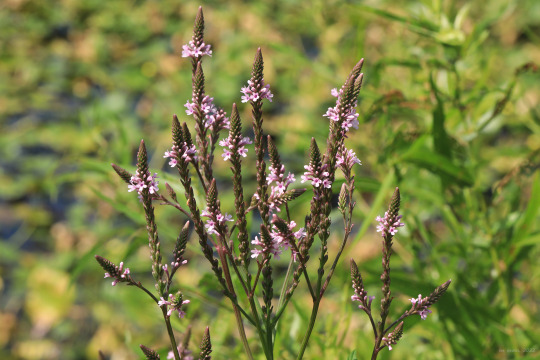
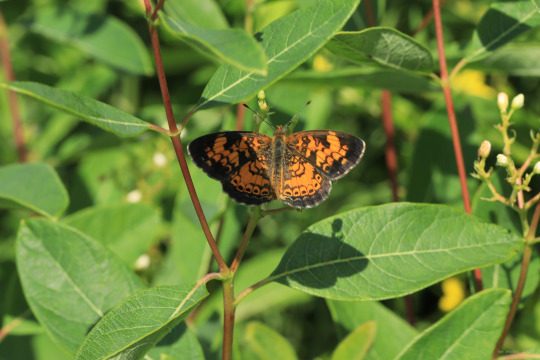


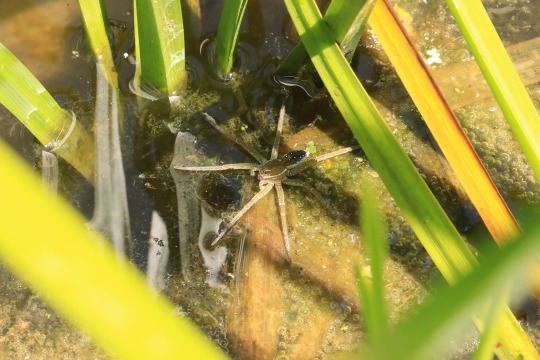
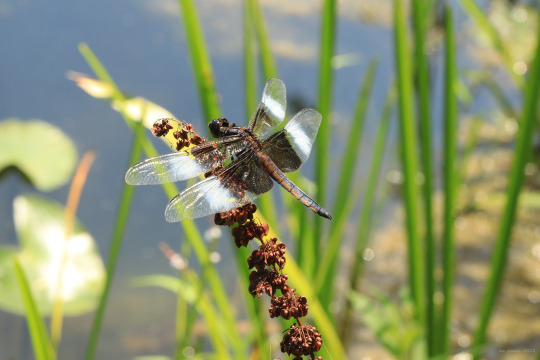
It was oppressively and unnecessarily hot today - in the low 90′s - so I eschewed any grand adventures and made homemade salsa instead with batches of newly-ripened goodies from my tomato and pepper pots. My sole foray outside was a mid-morning hike around Fairfax Pond-Rehe Wildlife Management Area, whose beautiful, interconnected ponds and waterways seemed right for the occasion. Swamp rose (Rosa palustris) is a bit past peak now, and riddled with Japanese beetles, but it makes a grand display starting in early July.
From top: swamp rose, a native perennial shrub that forms dense, colorful thickets along streambanks and ponds; rose milkweed (Asclepias incarnata), another wetlands-loving perennial with high-wildlife value; Allegheny monkeyflower (Mimulus ringens), an adorable colonizer with whimsical, double-lipped flowers; blue vervain (Verbena hastata), also known swamp verbena, a graceful, moisture loving perennial whose flowering spikes bloom from the bottom up; a silvery checkerspot (Chlosyne nycteis) cooling its jets on Indian hemp (Apocynum cannabinum), also known as hemp dogbane; fringed loosestrife (Lysimachia ciliata), yet another wetlands-loving perennial, whose droopy yellow flowers are quite beguiling; six-spotted fishing spider (Dolomedes triton), also sometimes referred to as dock spider for its habit of rapidly vanishing between the cracks of boat docks; and a male widow skimmer ((Libellula luctuosa) finding the perfect perch for scouting females and prey.
#appalachia#vandalia#summer#flora#rosa palustris#swamp rose#asclepias incarnata#rose milkweed#mimulus ringens#allegheny monkeyflower#verbena hastata#blue vervain#swamp verbena#chlosyne nycteis#silvery checkerspot#apocynum cannabinum#indian hemp#hemp dogbane#lysimachia ciliata#fringed loosestrife#dolomedes triton#six-spotted fishing spider#libellula luctuosa#widow skimmer#dragonfly#fairfax pond-rehe wildlife management area
35 notes
·
View notes
Text
Plants Native to Tennessee: Flower Edition
This is just going to be an info dump of different plans and herbs that grow in my area. It’s always frustrating to see all of these posts requiring certain kinds of herbs or flowers that I just don’t have access to. Hopefully other people in Appalachia can make use of this as well.

Bear Grass (also known as: Adam’s Needle) -
Species: Yucca filamentosa
Scattered lightly across the state, excluding in the northeast corner of Tennessee.
Correspondences: innocence, humility, reverence, purity, rejuvenation, travel, astral travel, knowledge, understanding, harmony, spirit communication, protection, telepathy, faith, consistency, mental clarity, optimism.
Uses: There is some evidences that Yucca plants can be used for high cholesterol, arthritis, high blood pressure, migraines, digestive disorders, diabetes, poor blood circulation, skin problems, and other conditions. (For dosages, side effects, and medication interactions, visit WebMD.)
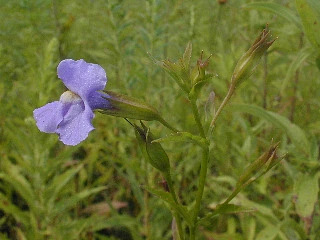
Allegheny Monkey Flower
Species: Mimulus ringens
This flower grows wildly in Blue Ridge, Ridge and Valley, and Cumberland Plateau regions
Correspondences: Femininity, growth, representative of the Maiden, elegance, grace, and the Fae.
Uses: I have been unable to find any medicinal and culinary uses for this plant. If you know or comes across any practical uses for it, please message me!

Allegheny Spurge
Species: Pachysandra procumbens
These flowers are found in Middle and East Tennessee
Correspondences: Change, new opportunities and beginnings, upward bound, successful endeavours, and representative of the Smoky Mountains.
Uses: Ornamental **TOXIC**

American Columbo (also: Green Gentian)
Species: Frasera caroliniensis
Found mostly in Middle Tennesse; can be found sprinkled lightly in West and East Tennessee.
Correspondences: Nature, growth, harmony, freshness, fertility, and safety.
Uses: The root of this plant can be used to make a tonic. There isn’t evidence of medicinal use.

American Ginseng
Species: Panax quinquefolius
These plants can be found across the entire state.
Correspondences: Passion, love, passionate love/lovers, seduction, danger, anger, adventure, fire, blood, nature, fertility, freshness.
Uses: This plant may be used to reduce inflammation, possibly beneficial to brain function, possible improvement for those with erectile dysfunction, boost the immune system, may fight fatigue and increase energy levels, and possibly lower blood sugar. (Research dosages, side effects, and medication interactions before using.)
***This shouldn’t need to be said but it does (based on the amount of tourists that I’ve seen that do this): IF YOU ARE IN THE GREAT SMOKY MOUNTAIN NATIONAL PARK OR ANY OTHER PARK DO NOT TAKE THESE PLANTS OR ANY OTHERS***

American Lotus
Species: Nelumbo lutea
These are found in the Gulf Coastal Plains of Tennessee (West Tennessee).
Correspondences: Purity, innocence, representative of The Maiden, fertility (can also be used as a symbol of virginity due to the fact that it has white petals).
Uses: Leaves, stalks, root stocks, and seeds may be eaten.
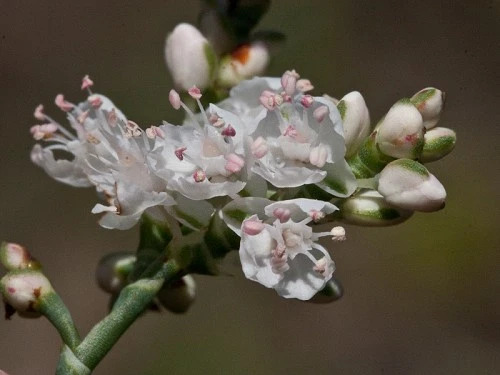
American Jointweed (also: Southern Jointweed)
Species: Polygonella americana
This flower is found ONLY in Morgan County (which is in East Tennessee). It is also an **ENDANGERED SPECIES** so obviously, if you come across this flower do NOT collect it under any circumstances.
Correspondences: innocence, fertility, virginity, feminine energies, delicacy, nostalgia, and romance.
Uses: I will not list the uses for the American Jointweed to prevent the temptation to collect this flower.
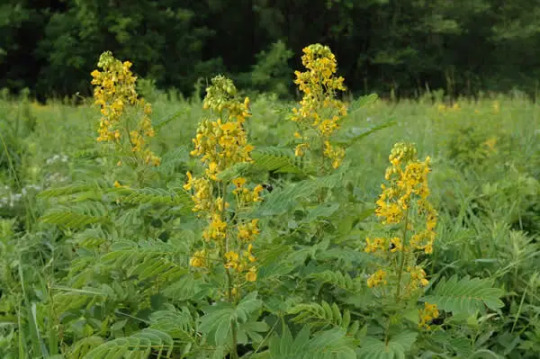
American Senna (also: Wild Senna)
Species: Cassia hebecarpa
This plant is most easily located in the eastern Blue Ridge and Ridge and Valley areas; however, it can also be found in smaller amounts in Middle, East, and West Tennessee.
Uses: Modernly, the plant is mostly ornamental. However, the Cherokee used Wild Senna in various infusions, concoctions, and salves to treat cramps, heart troubles, fevers, as a purgative, sores, and pneumonia. (Again, investigate before consuming.)
Correspondences: Joy, friendship, happiness, new beginnings, nature, safety, health, excitement, enthusiasm, boldness, brightness, intelligence, communication, travel, astral travel, knowledge, understanding, harmony, spirit, protection, telepathy, faith, consistency, mental clarity, optimism.
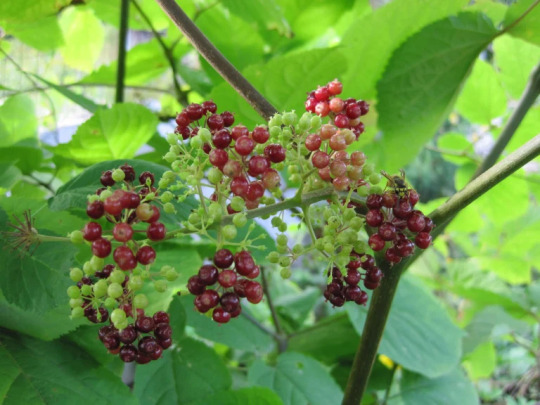
American Spikenard
Species: Aralia racemosa
This plant is most commonly located in East Tennessee, and more sparsely in Middle and West Tennessee.
Uses: This plant has been used for coughs, catarrh, tuberculosis leucorrhoea, prolapse of the uterus, and chlorosis.
Correspondences: Royalty, luxury, power, ambition, dreams and plans coming to fruition, new beginnings, new life.
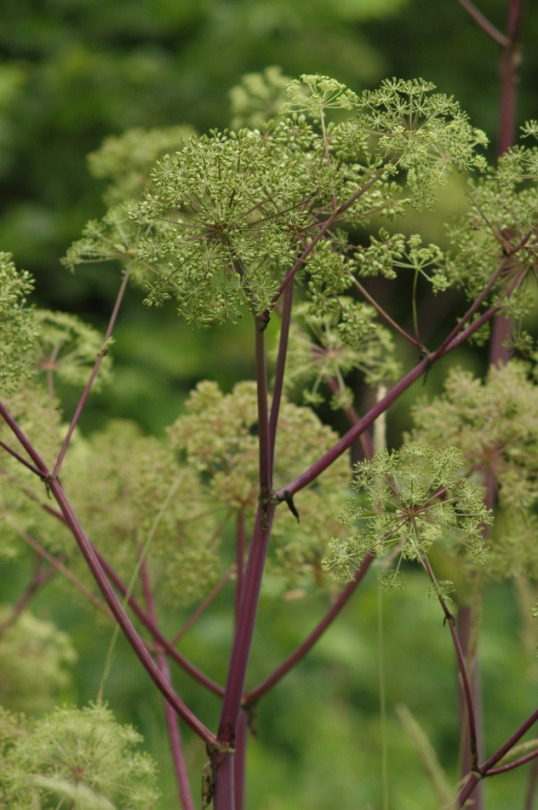
Angelica
Species: Angelica atropurpurea
This plant is only found in Johnson and Unicoi counties in the Blue Ridge Province.
Uses: The stems are edible (apparently some people make candy from the stems?? Not sure if that’s something I would personally do, but neat nonetheless). It is often used as a tonic, digestive aid, and treatment for chest complaints, anemia, and bronchitis. Teas and compresses can be made from the leaves.
Correspondences: Stability, ferocity, lovers, relationships, passion, passionate lovers and relationships, boosts sex life, independence, mystery, emotional vulnerability.
(Research properly before consuming. Yes, I will type this after nearly every entry. I ain’t trying to have someone go off on me because they’ve made themselves sick.)

Appalachian False Goat’s Beard
Species: Astilbe biternata
This flower grows mostly in East Tennessee, however, it also occurs sparsely in Middle Tennessee.
Uses: None found. Simply a perennial and decorative flower.
Correspondences: The fae, purity, purification, innocence, honesty. inspiration, money/finances, nature, prosperity, success.
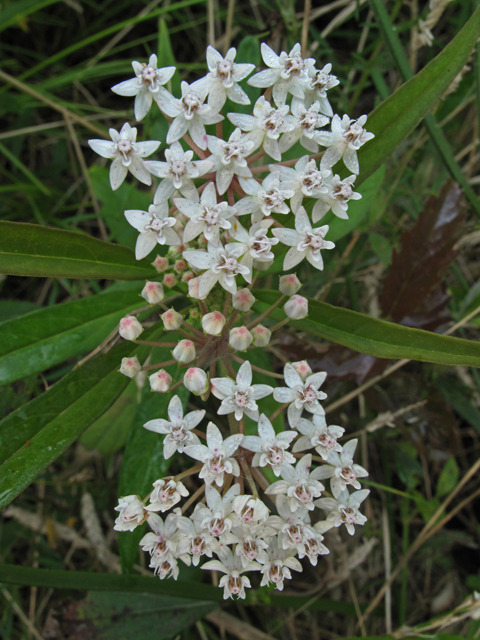
Aquatic Milkweed (also: Swamp Milkweed)
Species: Asclepias perennis
This flower is mostly found in West Tennessee.
Uses: This plant is **TOXIC **
Correspondences: Innocence, purity, purification, the broken link between human beings and the natural world, and reconnection.
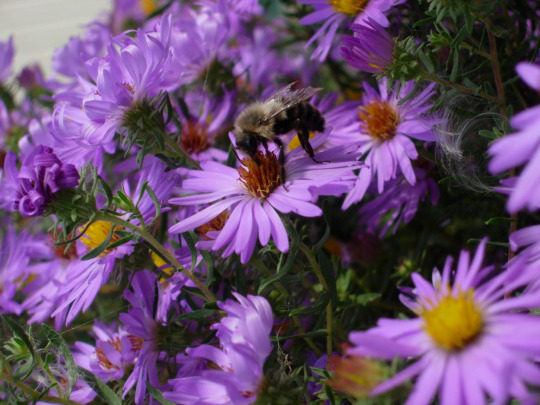
Aromatic Aster
Species: Symphyotrichum oblongifolium (Aster oblongifolius)
This flower is located sparsely in Middle and East Tennessee.
Uses: The only uses I found for this flower wasn’t able to be verified so what you’ll read next HAS NOT BEEN VERIFIED, DO YOUR OWN RESEARCH; you may find things I couldn’t. According to the one thing I’ve found, the roots could possibly be turned into a tea and consumed to treat fever.
Correspondences: Stars, the universe, the cosmos, ascension, success, springtime, hard work, the Goddess, regret, sorrow.

Arrowhead (also: Duck Potato)
Species: Sagittaria latifolia
This flower can be found is light amounts all over the state.
Uses: Tubers can be eaten in raw and cooked form; a poultice made from the leaves can be used to stop milk production; a tea from the roots can be used as a digestive aid; a poultice made from the roots can help treat wounds and sores.
Correspondences: Birds (specifically geese), purity, innocence, virginity, humility, gentle demeanor, happiness, happiness in friendships, joy, an aid for evocation of the God/Goddess(es).
Research this before consuming or applying to skin

Ashy Sunflower (also: Downy Sunflower)
Species: Helianthus mollis
This flower is native to Middle and West Tennessee
Uses: I wasn’t able to find uses for this particular species of sunflower. There are many uses for the common sunflower ( Helianthus annuus), however, I don’t know if their uses apply here. Research before consuming or applying to skin.
Correspondences: The sun, solar deities, positivity, joy, happiness, brightness, air, communication, travel, astral travel, knowledge, understanding, harmony, spirit communication, protection, telepathy, faith, consistency, mental clarity, optimism.

Barksdale’s Trillium (also: Furrowed Wakerobin, Sulcate Toadshade)
Species: Trillium sulcatum
This plant can be found in the Cumberland Plateau and the Ridge and Valley provinces.
Uses: The leaves can be cooked. The root can be used for an antiseptic, antispasmodic, diuretic, emmenagogue (to promote menstration), and ophthalmic uses. The roots can be used dry or boiled in milk (I’m sure milk substitutes could be used, but I’m not positive on that).
Correspondences: Love, violence, passion, purification, lust, amplifies energies, joy, luck, and confidenlce.


Barren Strawberry (also: Appalachian Barren Strawberry)
Species: Waldsteinia fragarioides
This plant is lightly scattered in East Tennessee.
Uses: A decoction can be made from this plant that is supposedly a blood remedy; a poultice made from the smashed plants. has been used on snakebites. (Treatments made from this plant are not a replacement for actual Medical Care.)
Correspondences: Symbolic of Venus - Goddess of Love, perfection, righteousness, purifying, love magick, blood magick, courage, power.
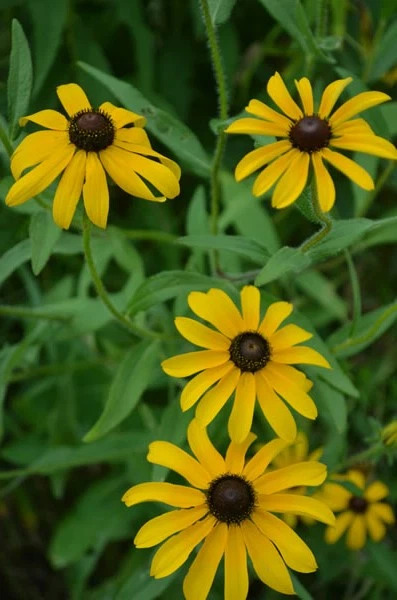
Biennial Black-eyed Susan
Species: Rudbeckia hirta
This flower can be found all over the state.
Uses: The roots of this plant are allegedly used to boost metabolism; it treats, the flu, colds, infection; snakebites, worms (in children) **THIS PLANT IS TOXIC TO CATS.**
Correspondences: Cleansing, releasing, grounding, meditation, spirit communication, joy, happiness, happiness within the darkness.

Big Leaf Mountain Mint (also: Short-Toothed Mountain Mint and Clustered Mountain Mint)
Species: Pycnanthemum muticum
Mostly found in Middle Tennessee and Blue Ridge regions.
Uses: Can be made into a tea or used as a substitute for mint in cooking
.Correspondences: Royalty, mysticism, mystery, the supernatural, cleanliness, a new slate, forgiveness.

Big-leaved Aster
Species: Eurybia macrophylla (Aster macrophyllus)
These are primarily found in the Eastern Blue Ridge region.
Uses: Larger, young leaves can be cooked and eaten as greens. It has also been used to treat blood disorders, loosening of the bowels (the roots are made into a decoction), treatment of headaches; burning this plant is supposed to attract deer.
Correspondences: Mystery, spirit magick, spirituality, mysticism, the supernatural.

Birdsfoot Violet
Species: Viola pedata
This flower is found statewide aside from the western boundary of Tennessee.
Uses: Poultices made from this plant are used to treat headaches and boils; infusions have been used to treat dysentery, colds, and coughs.
Correspondences: Femininity, death, faithfulness, healing, love, nymphs, peace, protection, rebirth, wishes.

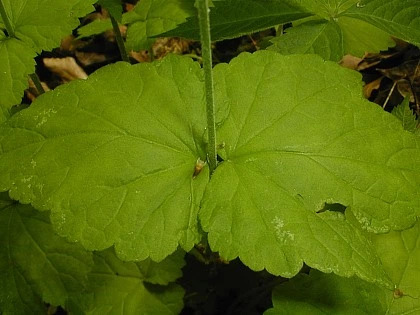
Bishop’s Cap (also: Miterwort and Twoleaf Miterwort)
Species: Mitella diphylla
This plant is mostly found in Middle and East Tennessee.
Uses: Ornamental.
Correspondences:
References:
https://www.avogel.ca/en/plant-encyclopedia/aralia-racemosa.php#:~:text=History,of%20the%20uterus%20and%20chlorosis.
https://en.wikipedia.org/wiki/Senna_hebecarpa#:~:text=They%20use%20a%20poultice%20the,compound%20decoction%20as%20a%20laxative.
https://www.teleflora.com/floral-facts/flower-color-meaning?promotion=JULYWELCOME5
https://tynnativeplants.wordpress.com/flowers/common-name/adams-needle-bear-grass/
https://ag.tennessee.edu/tnyards/Pages/The-Benefits-of-Native-Plants.aspx
0 notes
Text
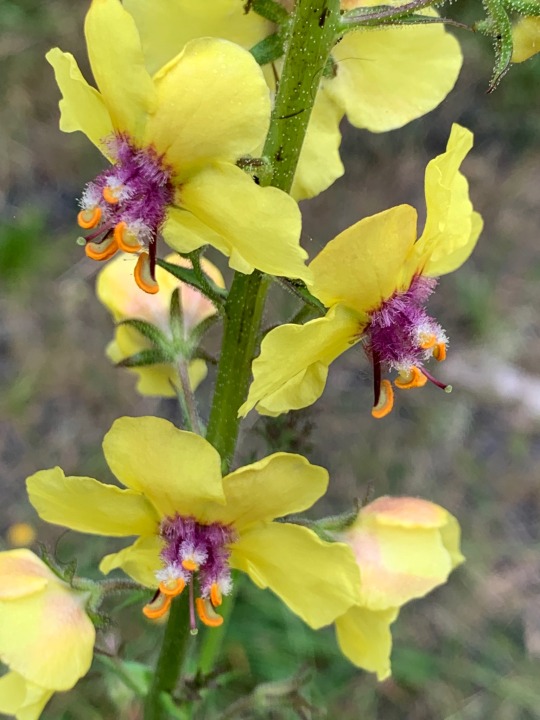
Overnight success...Mimulus Ringens...
49 notes
·
View notes
Photo
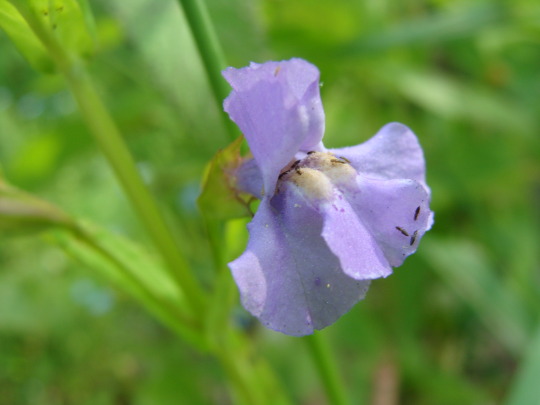
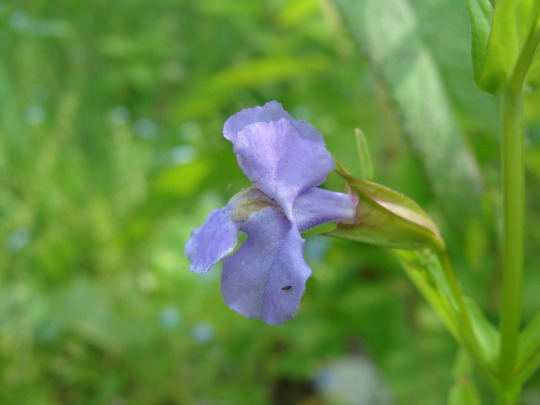
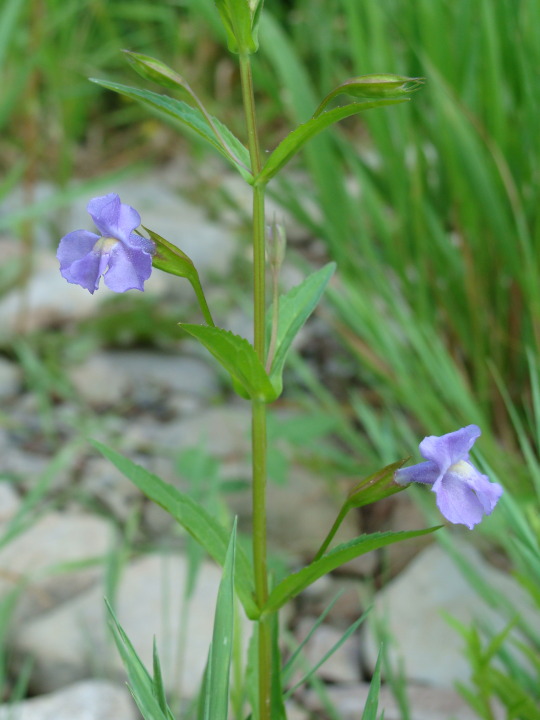
Monkeyflower
Mimulus ringens
Scrophulariaceae (Figwort) Family
Photographs taken on July 3, 2016 at Bronte Creek Provincial Park, Burlington/Oakville.
#Monkeyflower#monkey flower#Mimulus ringens#Scrophulariaceae Family#figwort family#Wildflowers of Southern Ontario#purple#july#photograph#bronte creek provincial park#ontario#canada#wildflowers#flowers#flower#wildflower#nature#plantblr#plant blog#flora
13 notes
·
View notes
Photo
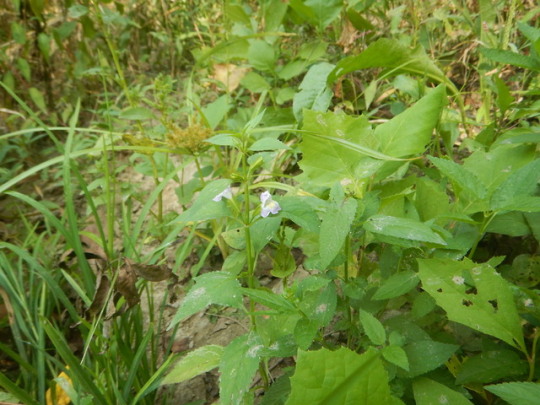

Allegheny monkey flower and Fringed loose strife growing next to each other in the mixed talus of an erosive cut bank.
Mimulus ringens, Lysimachia ciliata
13 notes
·
View notes
Text
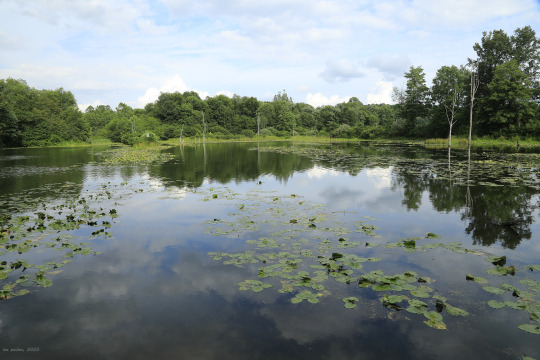


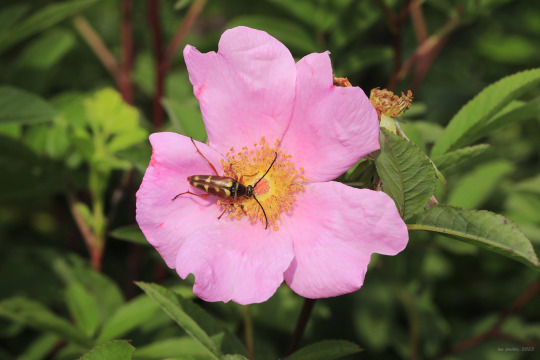
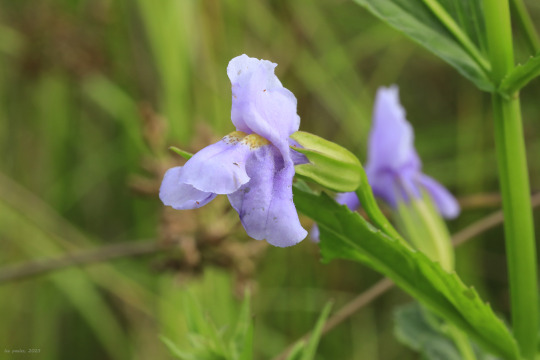


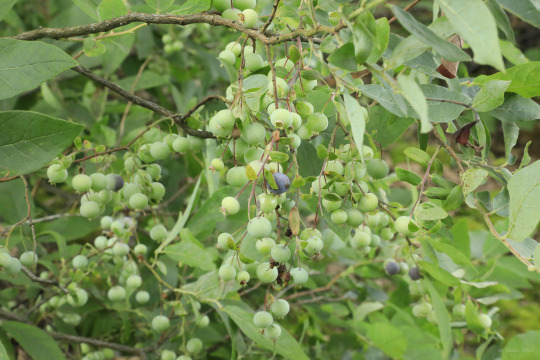


I took Blake up to Fairfax Pond-Rehe Wildlife Management Area tonight to scout fishing spots. While he counted bluegills, I was mesmerized by the memorably-dramatic, mid-summer sky, where the tattered remnants of the prior evening's storms stampeded across the horizon. Along the wetlands' edges, radiantly-beautiful swamp rose (Rosa palustris) spilled over into muddy pathways, keeping close company with Allegheny monkeyflower (Mimulus ringens) and blue vervain (Verbena hastata), also referred to as swamp verbena. In the oak-hickory woods farther back, the flowering spikes of downy rattlesnake plantain (Goodyera pubescens) poked up from the forest floor, and the dangling, bittersweet berries of deerberry (Vaccinium stamineum) were beginning to ripen. All reminding me how much I love summer's endless drama, occasional violence, and hurtling life force.
#appalachia#vandalia#west virginia#wildflowers#summer#flora#fairfax pond-rehe wildlife management area#preston county#wv route 92#swamp rose#allegheny monkeyflower#square-stemmed monkeyflower#blue vervain#swamp verbena#downy rattlesnake plantain#deerberry#southern gooseberry#dramatic sky
58 notes
·
View notes